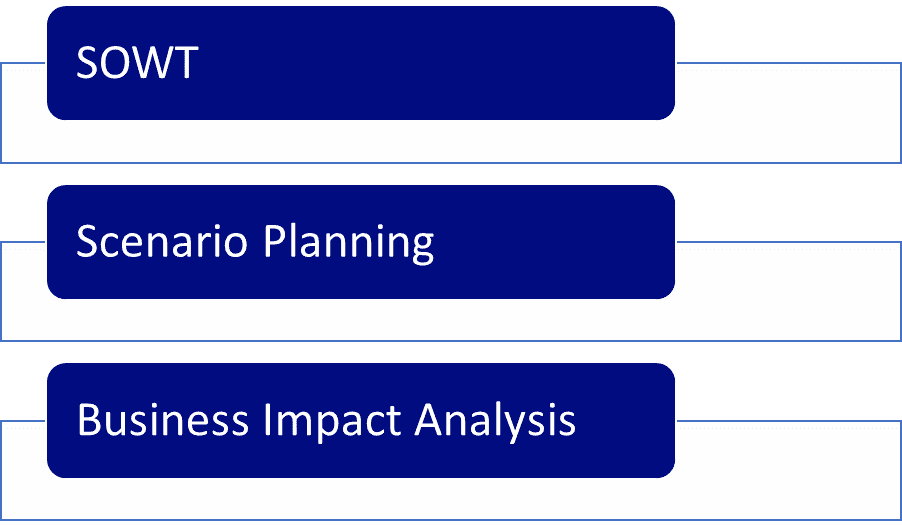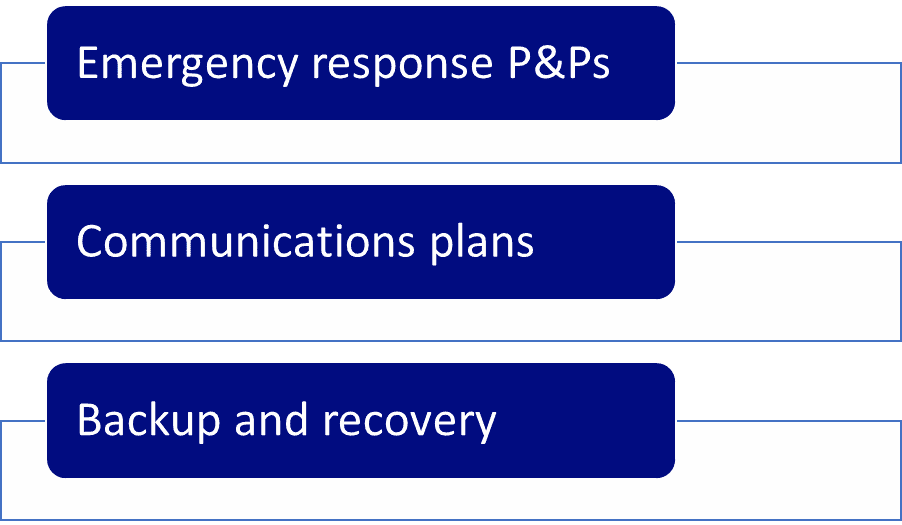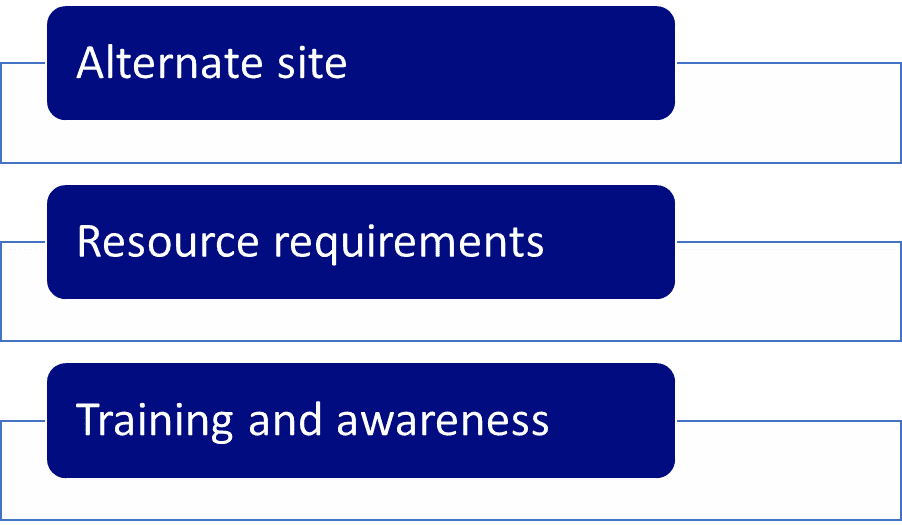The COVID-19 pandemic has highlighted the importance of business continuity planning for organisations of all sizes. The pandemic forced businesses to adapt to remote work environments and other disruptions that they may not have anticipated. But even before the pandemic, there were many potential risks and vulnerabilities that could disrupt business operations. From natural disasters to cyber attacks to supply chain disruptions, businesses face a variety of threats that can impact their ability to operate.
This article guides you on how to create a comprehensive business continuity planning that can help your business navigate unexpected disruptions. We will cover the key components of a business continuity planning, including assessing risk and vulnerabilities, developing a plan, testing and exercising the plan, and implementing the plan. We will also provide best practices and examples to help you create a plan that is tailored to your business needs.
Assessing Risk and Vulnerabilities
The first step in creating a business continuity plan is to assess your organisation’s potential risks and vulnerabilities. This will help you identify the types of disruptions that could impact your business operations and prioritise your planning efforts.
There are several methods organisations can use to conduct a risk assessment, including SWOT analysis, scenario planning, and business impact analysis. Each of these methods has its own strengths and weaknesses, so it is important to choose the method that best fits your business needs.

- SWOT analysis is a popular method for assessing risk because it is relatively simple and straightforward. SWOT stands for strengths, weaknesses, opportunities, and threats. By analysing each of these areas, you can identify potential risks and vulnerabilities that could impact your business. For example, a weakness could be a lack of redundancy in your IT systems, while a threat could be a natural disaster that could disrupt your supply chain.
- Scenario planning is another method that can help you assess risk. Scenario planning involves creating hypothetical scenarios that could disrupt your business operations and analysing how your business would respond to each scenario. For example, you could create a scenario in which a major supplier goes out of business, and then analyse how your business would respond to this disruption.
- Business impact analysis is a more comprehensive method for assessing risk. Business impact analysis involves analysing how different types of disruptions would impact your business operations, including the financial impact and the impact on your customers and stakeholders. This method can help you prioritise your planning efforts and identify the areas of your business that are most critical to your operations.
Regardless of the method you choose, it is important to involve stakeholders from across your organisation in the risk assessment process. This will ensure that you have a comprehensive understanding of potential risks and vulnerabilities and can create a plan that addresses the needs of all stakeholders.
Developing a BCP
Once you have assessed your organisation’s potential risks and vulnerabilities, the next step is to develop a business continuity planning. A business continuity plan should include the following key components:


- Emergency response Policies and Procedures (P&Ps):
This section of the plan should outline the steps your organisation will take in the event of an emergency, such as a natural disaster or cyber attack. It should include information about who is responsible for implementing the plan and how to activate the plan.
- Communication plans: In the event of a disruption, effective communication is critical. This section of the plan should outline how you will communicate with employees, customers, suppliers, and other stakeholders during an emergency. It should include information about who is responsible for communication and what methods will be used (i.e. email, phone, social media).
- Backup and recovery strategies: This section of the plan should outline your organisation’s strategies for backing up data and recovering from disruptions. It should include information about how often data is backed up, where backups are stored, and how backups will be restored in the event of a disruption.
- Alternate site strategies: In the event that your primary business location is unavailable, it is important to have a plan for alternate sites. This section of the plan should outline your organisation’s strategies for relocating to an alternate site, including how to identify and prepare alternate sites and how to transfer operations to the alternate site.
- Resource requirements: This section of the plan should outline the resources your organisation will need to implement the plan, including personnel, equipment, and supplies. It should include information about how to identify and secure the necessary resources.
- Training and awareness: To ensure that the plan is effective, it is important to provide training and awareness to employees and stakeholders. This section of the plan should outline the training and awareness activities that will be provided, including how often training will be provided and what topics will be covered.
Once you have developed a business continuity planning, it is important to review and update the plan regularly. This will ensure that the plan remains up-to-date and effective in the event of a disruption.
Testing and Exercising the Plan
An essential step in ensuring that the plan is effective includes testing and exercising the business continuity plan. Testing and exercising the plan can help you identify weaknesses in the plan and address them before a disruption occurs.
There are several methods you can use to test and exercise the plan, including tabletop exercises, functional exercises, and full-scale exercises.

- Tabletop exercises involve reviewing the plan and discussing how your organisation would respond to a hypothetical scenario. This method can help you identify areas of the plan that need improvement and refine the plan to better address potential risks and vulnerabilities.
- Functional exercises involve simulating a disruption and testing your organisation’s response to the disruption. This method can help you identify weaknesses in the plan and refine the plan to better address potential risks and vulnerabilities.
- Full-scale exercises involve simulating a large-scale disruption and testing your organisation’s response to the disruption. This method can help you identify weaknesses in the plan and refine the plan to better address potential risks and vulnerabilities.
Regardless of the method you choose, it is important to document the results of the testing and exercise and use this information to refine the plan.
Implementing the BCP
Business continuity planning implementation is the final step in the process. Implementing the plan involves ensuring that all stakeholders are aware of the plan and their roles and responsibilities in implementing the plan.
To implement the plan effectively, it is important to communicate the plan to all employees and stakeholders and provide training on the plan as necessary. It is also important to ensure that all necessary resources are in place and that everyone understands their roles and responsibilities.
Regularly reviewing and updating the plan is also critical to ensuring that the plan remains effective over time.
Conclusion
Creating a comprehensive business continuity planning can help your organisation prepare for unexpected disruptions and minimise the impact of disruptions on your business operations. By assessing your organisation’s potential risks and vulnerabilities, developing a plan, testing and exercising the plan, and implementing the plan, you can ensure that your organisation is prepared to navigate unexpected disruptions and continue to operate effectively. Regularly reviewing and updating the plan is also critical to ensuring that the plan remains effective over time. By following these best practices and tailoring the plan to your business needs, you can create a business continuity plan that provides peace of mind and protects your organisation from unexpected disruptions.





